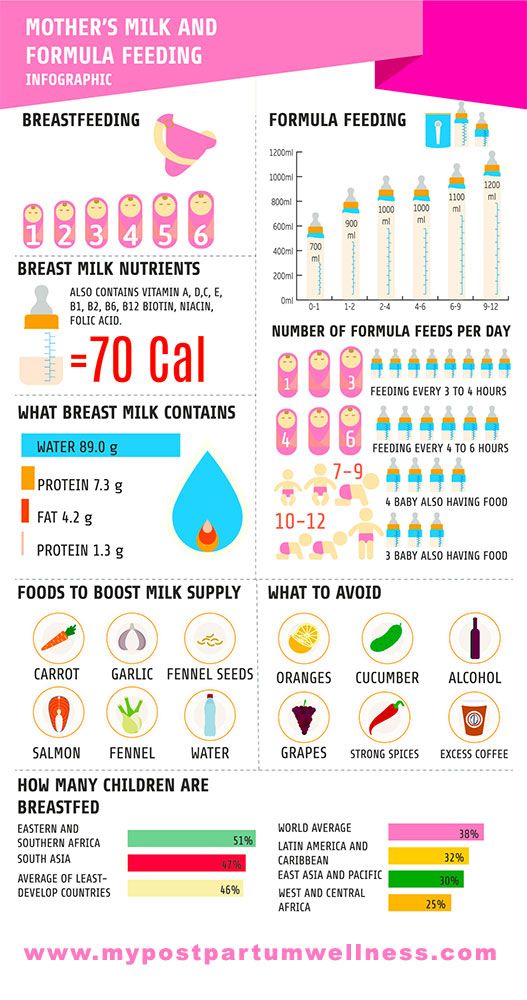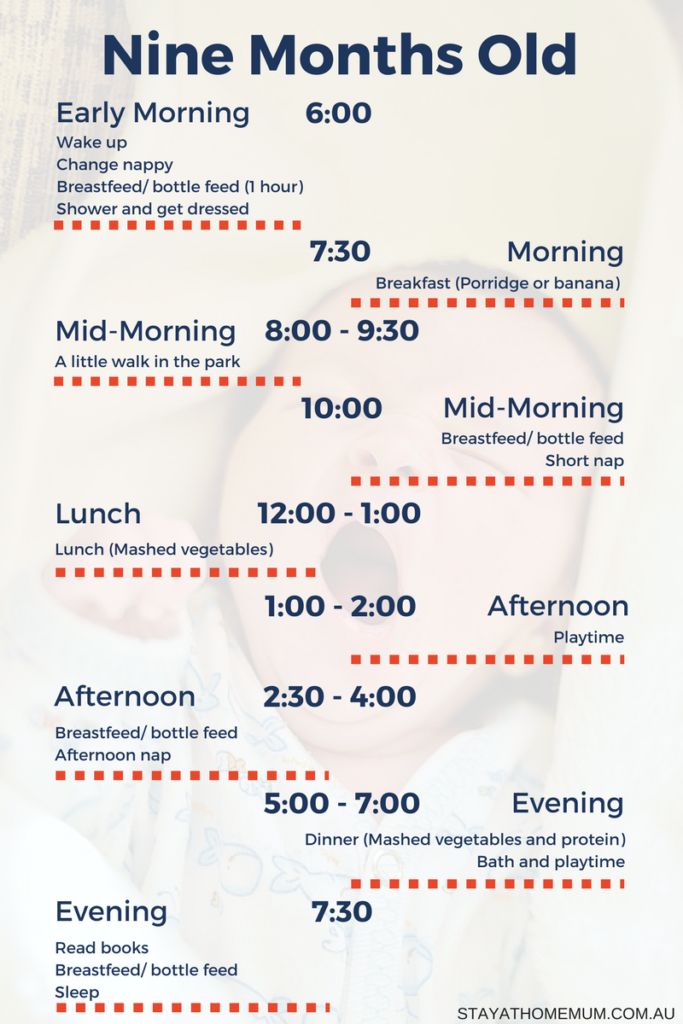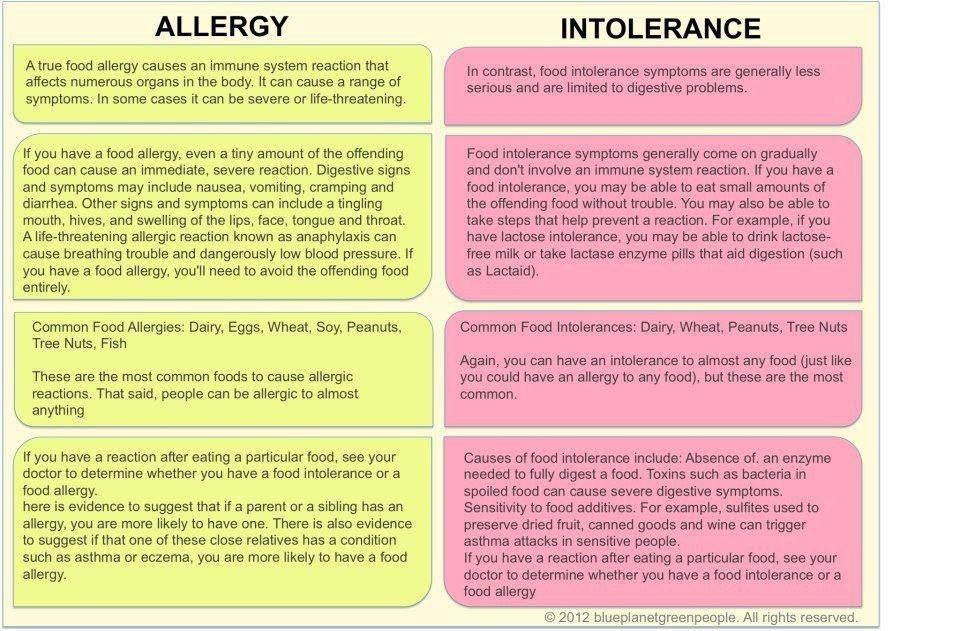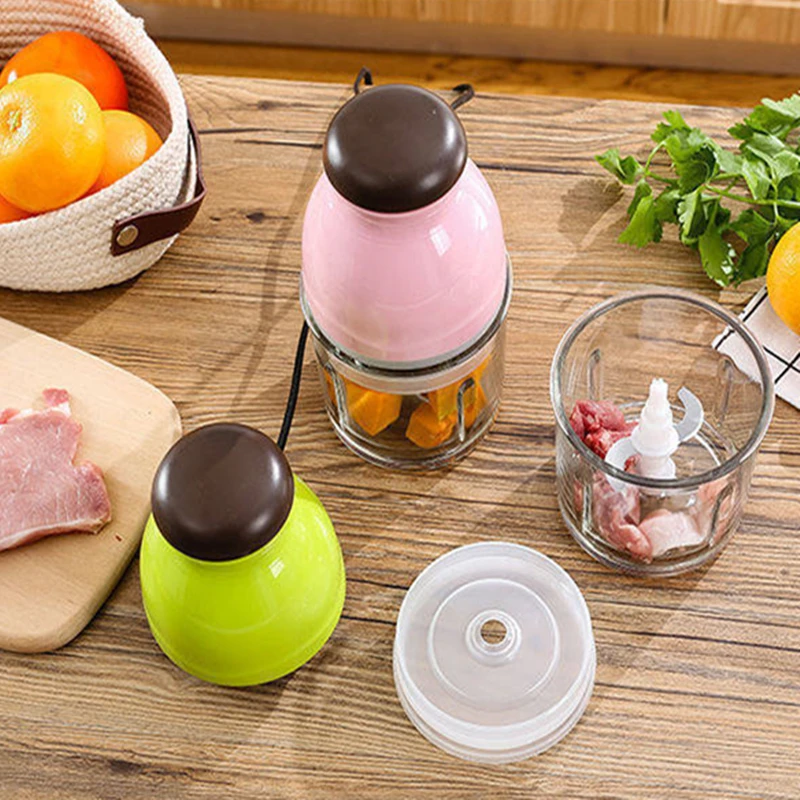Breastfed baby feeding amount
How Much Breast Milk Should a Newborn Drink
Learn how much breast milk a baby actually drinks, and how to initiate, build, and maintain a strong milk supply.
Share this content
Congratulations on making the decision to breastfeed your newborn, Mama! We know you’ll have a lot of questions as you become adjusted to life with a little one, and we’re here to help you ease into it all. After your baby is born, your pregnancy hormones will dissipate. This allows your milk-making hormones to officially kick into high gear. Beginning breastfeeding within the first hour or so following your newborn’s birth helps provide valuable colostrum from the moment your baby first latches on to feed. Colostrum, a thick, immune-building and antibody-rich early breast milk, is immediately available during and sometimes even shortly before the first phase of a mother’s lactation journey: The Initiation Phase.
The Initiation Phase | First 24 Hours
The first five days after birth, while your body learns to make larger quantities of milk and your baby learns to feed, are extremely important in setting up the rest of your breastfeeding journey - but don’t expect your supply to be plentiful immediately. On average, your baby will consume about a teaspoon of colostrum per feeding in the first 24 hours, which is ideal for his or her tiny stomach. In fact, your baby’s stomach is only about the size of a cherry on day one and holds just 5 – 7 mL or 1 – 1 ½ teaspoons of breast milk during each feeding! Don’t worry – it’s normal for babies to lose some weight after being born, but your doctor and nurses will be carefully monitoring your newborn to make sure they are healthy.
In addition to the nutritional and wellness benefits of colostrum for your baby, removing it by pumping or feeding tells your body that your baby will be getting hungry soon, so larger volumes of milk must be produced to meet your baby’s growing needs. By day 3, your newborn’s stomach will have grown to about the size of a walnut. This means that the amount of breast milk that a baby drinks will have increased exponentially in just a short time, with their tummy now able to hold between 22 – 27 ml or ¾ - 1 ounce per feeding. Feeding your newborn at least 8 – 10 times per day in the first week after birth helps to promote a healthy and ample milk supply going forward.
Feeding your newborn at least 8 – 10 times per day in the first week after birth helps to promote a healthy and ample milk supply going forward.
The Secretory Activation (or Building) Phase | 24 Hours to 2 Weeks
This phase happens when your body switches from producing colostrum to releasing more mature milk to meet the evolving needs of your growing newborn. While the timing is different for each mom, this typically occurs in the 24 – 120-hour range after birth. However, it can take longer for some moms, in which case you should work with your doctor or nurse to ensure your newborn is receiving the correct amount of nutrition until your milk volume increases. Often by the end of the first week, mothers are producing about 500 mLs or 16 ½ ounces of milk per 24 hours. Also around the 1 week mark, your baby’s stomach will have grown to about the size of an apricot with the capability of holding around 45 – 60 mL or 1 ½ - 2 ounces of milk
By about 2 weeks old, babies will generally be back up to their birth weight and will typically have at least 6 wet diapers and 3 or more diapers with bowel movements per 24 hours. Also around this time, your baby’s stomach has grown to about the size of an egg and can now hold between 80 – 150 mL or 2 ½ - 5 ounces per feeding. Your newborn will likely gain about 4 – 7 ounces per week in the first month and as you enter the Maintenance Phase of your lactation journey.
Also around this time, your baby’s stomach has grown to about the size of an egg and can now hold between 80 – 150 mL or 2 ½ - 5 ounces per feeding. Your newborn will likely gain about 4 – 7 ounces per week in the first month and as you enter the Maintenance Phase of your lactation journey.
The Maintenance Phase | 4 Weeks to 12 Months
From the 4-week mark through the time that additional foods are introduced into your baby’s diet at about 6 months of age, your milk supply won’t change much if your feeding and pumping routine remains consistent. Because new foods will eventually replace some of the breast milk in your baby’s diet starting around 6 months old, your supply may start to gradually decrease at this point unless you’re pumping to build a stash. Babies usually gain about 4 – 7 ounces per week, or 1 – 2 pounds per month, for the first 6 months. This usually then tapers down to about a pound per month from roughly 6 – 12 months of age.
It is important to remember that breastfed infants take fewer but longer feeds as they get older, though their daily consumption remains about the same. This means that your little one may have less nursing sessions through the day, but will typically nurse for a longer period when they do. During the 3 – 6-month-old period, babies start to grow more slowly, so they don’t need a lot more milk at this time.
This means that your little one may have less nursing sessions through the day, but will typically nurse for a longer period when they do. During the 3 – 6-month-old period, babies start to grow more slowly, so they don’t need a lot more milk at this time.
So, How Much Breast Milk Does a Baby Actually Need?
We try to make feeding as simple and straightforward as possible, but that’s not always easy. Every baby is different and, in most cases, there isn’t a specific intake amount that an infant must meet each day. Here are a few guidelines for what to expect:
- The amount of milk that a baby drinks from a single breast ranges anywhere from 30 – 135mL, though the average volume is about 75 ml.
- Your number of breastfeeding sessions per day may be anywhere from 4 – 13, depending on his or her appetite and how much milk is removed from the breast during each session.
- A single breastfeeding session can express anywhere from 54 – 234 mL of milk.
- Boys typically drink about 831 mL daily while girls usually drink about 755 mL each day.

With that in mind, the range of daily milk intake of growing, exclusively breastfed infants is anywhere from 478 – 1,356 mL. So, answering the question of how much breast milk a baby needs isn’t so easy. While guidelines like the above help give a little bit of context around your feeding experience, every mom, every baby and every breastfeeding journey is unique. As long as both mom and baby are happy and healthy, you’re doing things right!
Newborn Feeding Chart
Looking for more breastfeeding resources? Download our printable feeding and pumping log - available in English or Spanish! - for easy tracking of your baby's feedings and your pumping sessions.
You can also download our Medela Family app for personalized tracking of all your unique breastfeeding goals right from your smartphone, or take a look at the handy resources below:
What is the Range of Normal?
Baby Feeding Chart - How Many Ounces By Age
As newborns, babies seem to eat, sleep, and poop all day – every day. But, as your baby gets older, you may be wondering how much your baby should be eating, how often, and how many ounces by age. Keep in mind that milk should be your baby’s primary form of nutrition for the first year. Even after you’ve begun to offer solid foods, your baby’s milk intake should not decrease much, if at all. Also, babies are very good at self-moderation, so it is usually unnecessary to limit your baby’s milk intake for fear of him or her becoming overweight. Your baby’s growth and development depend on a large consumption of fat and calories.
But, as your baby gets older, you may be wondering how much your baby should be eating, how often, and how many ounces by age. Keep in mind that milk should be your baby’s primary form of nutrition for the first year. Even after you’ve begun to offer solid foods, your baby’s milk intake should not decrease much, if at all. Also, babies are very good at self-moderation, so it is usually unnecessary to limit your baby’s milk intake for fear of him or her becoming overweight. Your baby’s growth and development depend on a large consumption of fat and calories.
These baby feeding charts for breastfeeding babies, formula-fed babies, and solids will help guide you to know if your baby is eating enough and how to help your baby sleep through the night sooner rather than later. You may want to bookmark this page for future reference or pin it on Pinterest.
Quick Links:
Breastmilk Amounts by Age
Formula Amounts by Age
Solid Food Amounts by Age
Breastmilk Feedings and Amounts by Age
All breastfed babies need between 20-35 ounces of breast milk per day, on average. In younger newborns and up to 2-3 months old, your baby should breastfeed on-demand, which usually means every 2-3 hours.
In younger newborns and up to 2-3 months old, your baby should breastfeed on-demand, which usually means every 2-3 hours.
If you are pumping, breastmilk bottles vary in size from 3 to 6 ounces, usually, with 4 ounces being the average size once a baby is at least 3-4 months old. Keep in mind that some babies simply have larger appetites than others. The most important aspect is that your baby’s weight gain stays on his or her growth curve. Do not withhold milk from your baby in fear he or she will become overweight. Babies are very good at self-moderation and should be fed when hungry.
Keep in mind that the number of times your baby breastfeeds in a 24-hour period will depend on the combination of:
a) how much milk your baby can hold in their stomach (i.e. stomach capacity).
b) how much milk you can store in your breasts (which has nothing to do with breast size).
c) your baby’s personality as well as if they have any digestion issues such as reflux.
We find babies who have reflux tend to eat more frequent, smaller meals. Also, some baby’s personalities are to overfill themselves while others eat until content and stop. My two boys were different than one another. While my first son would only ever eat 4-ounce bottles when we weren’t breastfeeding, his brother would take up to 5 to 5 1/2 ounce bottles at times. They were just different and even as my first son got older, he would simply NOT overeat or overfill his stomach and is still this way to this day.
Here is a handy baby feeding chart with breastmilk amounts by age, though keep in mind that many breastfeeding mothers feed their babies on-demand throughout their breastfeeding journey. This is just a rough guide to consider, especially if you feel like you are having to feed your baby excessively given his or her age.
If you ever have any concerns about your baby and your baby’s feeding habits, please be sure to seek out a healthcare provider and/or lactation consultant.
| Age | # of feedings per day / 24 hours | Feeding Frequency | Average Bottle Sizes (if applicable) | Night Feedings |
|---|---|---|---|---|
| 0-4 weeks | on-demand | on-demand* | ~2-3 ounces / 60-90 ml | on-demand |
| 5-8 weeks | on-demand | every 2-3 hours** | ~2-4 ounces / 60-120 ml | 3-4 |
| 9-12 weeks/3 months | ~8-10 | every 2-3 hours | 3-4 ounces / 90-120 ml | 2-3 |
| 13-16 weeks/4 months | ~6-10 | every 2-3 hours | 3-4 ounces / 90-120 ml | 2-3 |
| 5 months | ~6-10 | every 2-3 hours | 3-4 ounces / 90-120 ml | 2, maybe 3 |
| 6 months | ~6-9 | every 3 hours | 4-5 ounces / 120-150 ml | 1-2 |
| 7 months | ~5-8 | every 3-4 hours | 4-6 ounces / 120-180 ml | 1-2 |
| 8 months | ~5-8 | every 3-4 hours | 4-6 ounces / 120-180 ml | 1, maybe 2 |
| 9 months | ~5-8 | every 3-4 hours | 4-6 ounces / 120-180 ml | 1 |
| 10 months | ~4-6 | every 3-4 hours | 4-6 ounces / 120-180 ml | 0-1 |
| 11 months | ~4-6 | every 3-4 hours | 4-6 ounces / 120-180 ml | 0 |
| 12 months | ~4-6 | every 3-4 hours | 4-6 ounces / 120-180 ml | 0 |
* If your baby goes longer than 4 hours without eating, be sure to wake him or her to feed them.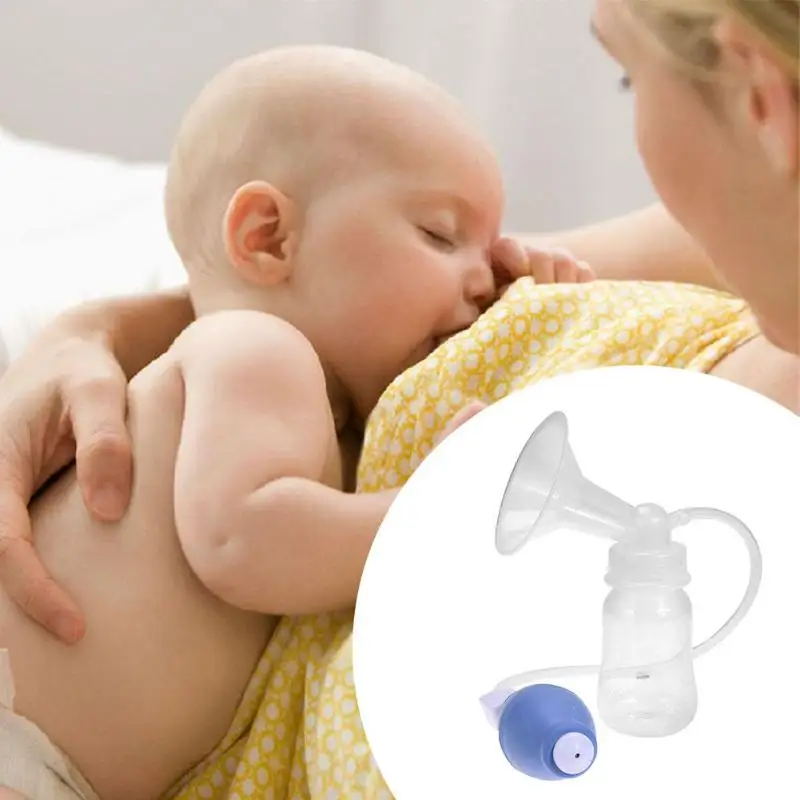
** Many newborns cluster feed in the evenings, which means they may nurse every hour for several hours or practically remain on the breast for several hours. Some say they are “tanking up” for the night.
You may also be interested in:
- Baby Night Feedings By Age Chart
- Baby Sleep and Breastfeeding Series
- Breastfeeding and Sleep Training – Can They Go Together?
Formula Feeding Amounts by Age
Formula fed infants typically need 2 1/2 ounces or 74 ml of formula for each pound of weight, on average. Some babies have larger appetites than others, though. I have worked with a lot of families, personally, and some babies take small bottles and consume around 24 oz a day total while others consume over 30 oz. The most important thing to remember is that your baby should stay on his or her own growth curve.
In the newborn days, it’s important to feed your baby on-demand whenever he or she shows signs of hunger. As your baby grows older, you can consider putting your baby on a schedule.
As your baby grows older, you can consider putting your baby on a schedule.
While some parents and babies thrive on schedules, some people prefer to allow the daily routine to be flexible. Keep in mind that the more your baby eats during the day, the sooner your baby will sleep through the night.
Here is a formula-feeding chart to tell you the average frequency and bottle sizes of formula by age, but keep in mind that some babies eat a variable amount at different times of the day. You should use this chart simply as a guide while also adapting your daily routine to fit your unique baby.
If you ever have any concerns about your baby and your baby’s feeding habits, please be sure to seek out a healthcare provider and/or lactation consultant.
| Age | # of feedings per day / 24 hours | Feeding Frequency | Average Bottle Size | Night Feedings |
|---|---|---|---|---|
| 0-4 weeks | on-demand | on-demand* | ~2-4 ounces / 60-120 ml | on-demand |
| 5-8 weeks | 6-7 | every 3 hours | ~4 ounces / 120 ml | 2-3 |
| 9-12 weeks/3 months | 5 | every 3 hours | 4-6 ounces / 120-180 ml | 2, maybe 3 |
| 13-16 weeks/4 months | 5 | every 3-4 hours** | 4-6 ounces / 120-180 ml | 1-2 |
| 5 months | 4-5 | every 3-4 hours | 6-7 ounces / 180-210 ml | 1-2 |
| 6 months | 4-5 | every 3-4 hours | 6-8 ounces / 180-240 ml | 0-1 |
| 7 months | 4-5 | every 3-4 hours | 6-8 ounces / 180-240 ml | 0*** |
| 8 months | 4-5 | every 3-4 hours | 6-8 ounces / 180-240 ml | 0 |
| 9 months | 4-5 | every 3-4 hours | 6-8 ounces / 180-240 ml | 0 |
| 10 months | 3-5 | every 3-4 hours | 6-8 ounces / 180-240 ml | 0 |
| 11 months | 2-4 | every 3-4 hours | 6-8 ounces / 180-240 ml | 0 |
| 12 months | 2-3 | every 3-4 hours | 6-8 ounces / 180-240 ml | 0 |
* If your baby goes longer than 4 hours without eating, be sure to wake him or her to feed them.
** Not all babies get to 4 hours between milk feedings by this age or ever. Some babies will always eat every 3 hours until 9-10+ months old.
*** Some formula-fed babies still eat at night even past 6 months old, especially if they have reflux.
You may also be interested in:
- Baby Night Feedings By Age Chart
- Baby Feeding Schedule: Rigid, Flexible, or On-Demand?
- How to Put Your Baby on a Schedule
Solid Foods by Age
As you start solids, your baby’s milk intake should not decrease much, if at all, until 10+ months old when he or she is eating 3 solid meals per day plus one snack. For the first year, solid food is a lot about practice and introducing a variety of flavors and textures. Keep in mind that until your baby is consuming significant amounts of solid food, starting solids won’t necessarily help your baby sleep. In fact, so many sleep problems have nothing to do with hunger that starting solids doesn’t change sleep whatsoever.
Here is a baby feeding chart for solid foods. Keep in mind that if you are practicing baby led weaning, whether by choice or because your baby doesn’t like pureed foods, your baby will likely consume a lot less solid food than other babies his or her age. That is just fine as milk should still be your baby’s primary source of nutrition.
| Age | Grains (per day) | Fruit (per day) | Vegetables (per day) | Meat and Dairy (per day) |
|---|---|---|---|---|
| Birth-5 months | None | None | None | None |
| 6 months (1 solid feeding per day) | 1-2 tablespoons dry infant cereal, mixed with breastmilk or formula | 1-2 tablespoons pureed fruit | 1-2 tablespoons pureed vegetables | None |
| 7-8 months (2 solid feedings per day) | 1-6 tablespoons dry infant cereal, mixed with breastmilk or formula | 1-6 tablespoons pureed/mashed fruit | 1-6 tablespoons pureed/mashed vegetables | Meat: 1-2 tablespoons pureed/mashed protein (offer at 8 months) Dairy: 1/4-1/2 cup yogurt or cottage cheese; 1 oz. 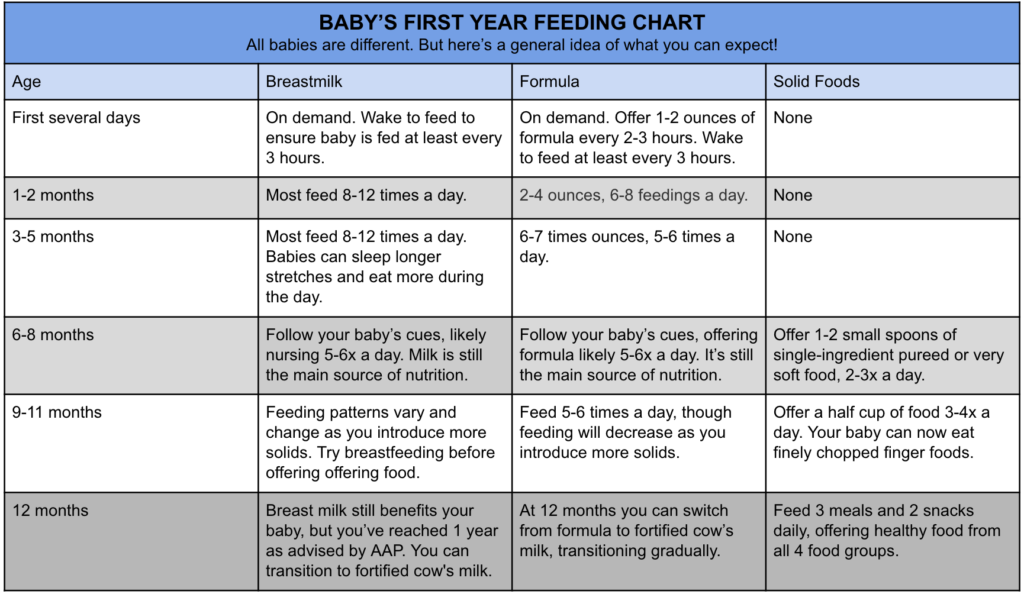 shredded cheese shredded cheese |
| 9-10 months (3 solid feedings per day) | 2-4 tablespoons dry infant cereal, mixed with breastmilk or formula. 1-2 servings other grains* | 4-8 tablespoons mashed/chopped fruit | 4-12 tablespoons mashed/chopped vegetables | Meat: 2-6 tablespoons mashed/chopped protein Dairy: Same as 7-8 month recommendations. |
| 11-12 months (3 solid feedings per day) | Same as above, except increase “other grains” to 2 servings | 6-8 tablespoons mashed/chopped fruit, or 1/2 cup diced | 6-12 tablespoons mashed/chopped vegetables, or 1/2 – 3/4 cup diced | Meat: 2-6 tablespoons mashed/chopped protein, or 1/4 cup diced Dairy: Same as 7-8 month recommendations. |
* 1 serving of “other grains” = 1/2 slice of bread, 2 crackers, 1/2 cup Cheerios, or 1/2 cup whole wheat pasta
You might also be interested in:
- When to Start Solids
- How to Feed Your Baby Solids
- Your Baby’s Start On Solid Foods: A Comprehensive Guide
Share your experience with feeding your baby!
The Baby Sleep Site® is a participant in the Amazon Services LLC Associates Program and other product affiliate programs. If you click on a product link and make a purchase, The Baby Sleep Site® may (but not always) receive a small commission from the company selling the product, but will not affect your purchase price. We only recommend products that we believe are quality products and are good for our readers.
If you click on a product link and make a purchase, The Baby Sleep Site® may (but not always) receive a small commission from the company selling the product, but will not affect your purchase price. We only recommend products that we believe are quality products and are good for our readers.
If you are tired of wading through stacks of baby sleep books that just aren't working, if you are beyond exhausted and just can't solve your child's sleep problems on your own...then personalized sleep consulting is for you. We have been around since 2008 and invite you to tap into our MANY years of experience. Our team of expert consultants will create a Personalized Sleep Plan® just for your family and then support you through every step of implementing your plan. We encourage you to consider our personalized, one-on-one baby and toddler sleep consultation packages if you want to see real, meaningful results now. Your consultation package also includes ample follow-up help, designed to help you troubleshoot problems and tweak your plan as needed.
Your consultation package also includes ample follow-up help, designed to help you troubleshoot problems and tweak your plan as needed.
Learn More About Services
For those persistent nighttime struggles, check out The 3 Step System to Help Your Baby Sleep. Using the same unique approach and practical tools for success, this e-book helps you and your baby sleep through the night.
Learn More About The 3-Step System
If you’re looking for ways to get your baby or toddler into a healthy sleeping routine during the day, explore Mastering Naps and Schedules, a comprehensive guide to napping routines, nap transitions, and all the other important “how-tos” of good baby sleep. With over 45 sample sleep schedules and worksheets, Mastering Naps and Schedules is a hands-on tool ideal for any parenting style.
Learn More About Mastering Naps
For those persistent toddler sleep struggles, check out The 5 Step System to Help Your Toddler Sleep. Using the same unique approach and practical tools for success, this e-book helps you and your toddler sleep through the night and enjoy a better daytime schedule.
Using the same unique approach and practical tools for success, this e-book helps you and your toddler sleep through the night and enjoy a better daytime schedule.
Learn More About The 5-Step System
Join our VIP Members Area packed with exclusive content and resources: e-Books, assessments, detailed case studies, expert advice, and more. As a VIP member, you'll also enjoy a weekly chat with an expert sleep consultant.
Learn More About VIP Membership
How to introduce complementary foods while breastfeeding: Monthly chart
Reviewer Kovtun Tatiana Anatolievna
24346 views
November 24, 2021
Login or register to save articles and products to your favorites
Before every parent one day the question arises - how to introduce complementary foods for months and do it right?
When to start complementary foods
The question of the timing of the introduction of complementary foods is still debatable. Over the past decades, doctors have agreed that the introduction of complementary foods with any type of feeding should be started at 4-6 months. However, the principle of an individual approach to each child remains unshakable in the organization of complementary foods. There are quite a few factors that affect the age of the first complementary foods. Therefore, before giving your baby new products, you should consult a pediatrician [1, 2] .
Over the past decades, doctors have agreed that the introduction of complementary foods with any type of feeding should be started at 4-6 months. However, the principle of an individual approach to each child remains unshakable in the organization of complementary foods. There are quite a few factors that affect the age of the first complementary foods. Therefore, before giving your baby new products, you should consult a pediatrician [1, 2] .
The order of introduction of products is also determined individually. So, for example, porridge is recommended to be administered first with a lack of body weight. If the baby's weight is normal or in excess, it is better to start with vegetable puree. However, these recommendations should be based only on the opinion of the pediatrician.
Which products should be preferred: ready-made or homemade
Experts answer this question as follows: let's say any option, depending on the individual conditions, developmental characteristics and health status of the baby, the capabilities and desires of the family. However, the decision must also be made after consultation with your pediatrician. Industrial products have a number of advantages. Firstly, for their preparation only safe raw materials are used, which pass all the necessary checks and quality control. In addition, for the manufacture of baby food, technologies are used that meet all hygienic standards. Secondly, when developing their composition, the required level of grinding is taken into account. Thirdly, specialists who are responsible for safety are involved in the manufacture of complementary foods.
However, the decision must also be made after consultation with your pediatrician. Industrial products have a number of advantages. Firstly, for their preparation only safe raw materials are used, which pass all the necessary checks and quality control. In addition, for the manufacture of baby food, technologies are used that meet all hygienic standards. Secondly, when developing their composition, the required level of grinding is taken into account. Thirdly, specialists who are responsible for safety are involved in the manufacture of complementary foods.
Where to start complementary foods
Dairy-free cereals
For the first acquaintance with grain products, rice or buckwheat baby porridge is suitable. It is better to give preference to cereals of industrial production. Despite the great desire of parents to cook porridge on their own, it must be understood that during cooking, cereals can lose a number of important nutrients. Instant cereals, that is, soluble, are distinguished by the fact that during their production the substances necessary for a small organism are preserved. In addition, the required degree of grinding is taken into account and observed at the baby food production plant.
In addition, the required degree of grinding is taken into account and observed at the baby food production plant.
Vegetables
It is better to start complementary foods with one-component puree of broccoli, cauliflower or courgettes [1] . All these products should be introduced in turn, observing the reaction. If the baby has taken well one type of vegetable, you can offer another, gradually expanding the diet. Experts recommend starting a child's training in vegetables with industrial baby purees. This approach guarantees the safety of the first complementary foods, because their production undergoes a multi-stage test. The FrutoNyanya baby puree contains only natural vegetables, without the addition of starch, salt or preservatives.
Breastfeeding complementary feeding chart by month
These recommendations are generalized and do not take into account the individual characteristics of each child, so the exact scheme and timing of the introduction of complementary foods should be checked with your pediatrician.
| Product names (g, ml) | 4–5 months | 6 months | 7 months | 8 months | 9-12 months |
| vegetable puree | 10 - 150 | 150 | 150 | 150 | 150 |
| Porridge | 10 - 150 | 150 | 150 | 180 | 200 |
| Meat puree of industrial production*/boiled meat | - | 5–30/ 3–15 | 40–50/ 20–30 | 60–70/ 30–35 | 80–100/ 40–50 |
| Fruit puree** | 5 - 50 | 60 | 70 | 80 | 90-100 |
| Cottage cheese (not earlier than 5.5 months)*** | - | - | - | 10-40 | fifty |
| Yolk (pcs.) | - | - | ¼ | ½ | ½ |
| Fish puree | - | - | - | 5-30 | 30-60 |
| Fruit juice | - | - | - | 5-60 | 80-100 |
| Kefir and other non-adapted dairy drinks for children | - | - | - | 200 | 200 |
| Baby biscuits | - | 3 | 5 | 5 | 5 |
| Wheat bread, crackers | - | - | - | 5 | ten |
| Vegetable oil**** | 1-3 | 5 | 5 | 6 | 6 |
| Butter***** | 1-3 | four | four | 5 | 5 |
| * without vegetable raw materials added ** not for first foods *** according to indications from 6 months ****added to vegetable puree | |||||
|---|---|---|---|---|---|
General rules for the introduction of complementary foods
- Complementary feeding schedule - the age of introduction, the type and amount of products - should be determined by the pediatrician.
 Only a doctor can develop an individual scheme for the first feeding for a baby by months, because he knows about the features of the growth and development of the baby.
Only a doctor can develop an individual scheme for the first feeding for a baby by months, because he knows about the features of the growth and development of the baby. - Complementary foods should be introduced gradually, ½ tsp in the first half of the day, before the main feeding for 5–7 days, increasing the volume in accordance with the age norm. After mastering one type of complementary foods, you can proceed to the next.
- The first complementary foods should be puree-like consistency. Gradually, the dishes should become thicker, and by 8-10 months, pieces may appear in them.
- It is better to introduce new products in the morning, so it is easier to follow the reaction of the baby during the day. After the first “tasting”, you need to carefully monitor the condition of the skin, stool and evaluate the general behavior of the child. If everything is in order, then the body has accepted a new product and you can continue to adapt to it. It is recommended to keep a food diary.

- You need to offer the child complementary foods from a spoon, after checking the temperature of the food - it should correspond to body temperature. During the trial of new products, the baby should be seated in high chair (if the baby is already sitting well). It provides an anatomically correct posture for eating.
- If the child is breastfed, after each feeding during the introduction of complementary foods, it is recommended to apply it to the breast. This will help maintain lactation.
List of sources
1. The program for optimizing the feeding of children in the first year of life in the Russian Federation: guidelines / FGAU "NMIC of Children's Health" of the Ministry of Health of Russia. — M.: b. i., 2019. - 112 p.
2. Borovik T. E., Skvortsova V. A., Netrebenko O. K. Complementary foods in infant nutrition // Pediatrics. Journal them. G. N. Speransky. 2008. No. 4.
Reviewer Kovtun Tatiana Anatolievna
Scientific adviser to PROGRESS JSC, Ph. D.
D.
- All articles
- Food
- Health
- Development
- A family
Child's age
Login or register to save articles and products to your favorites
Nutrition
91 views
When to introduce potatoes into the first complementary foods?
Login or register to save articles and products to your favorites
Nutrition
402 views
We eat together: when to transfer the child to the "common table"
Variety of choices - what to give the child? How to choose a product? Norms for the consumption of fruits and berries
Login or register to save articles and products to your favorites
Power
6806 views
Feeding rules.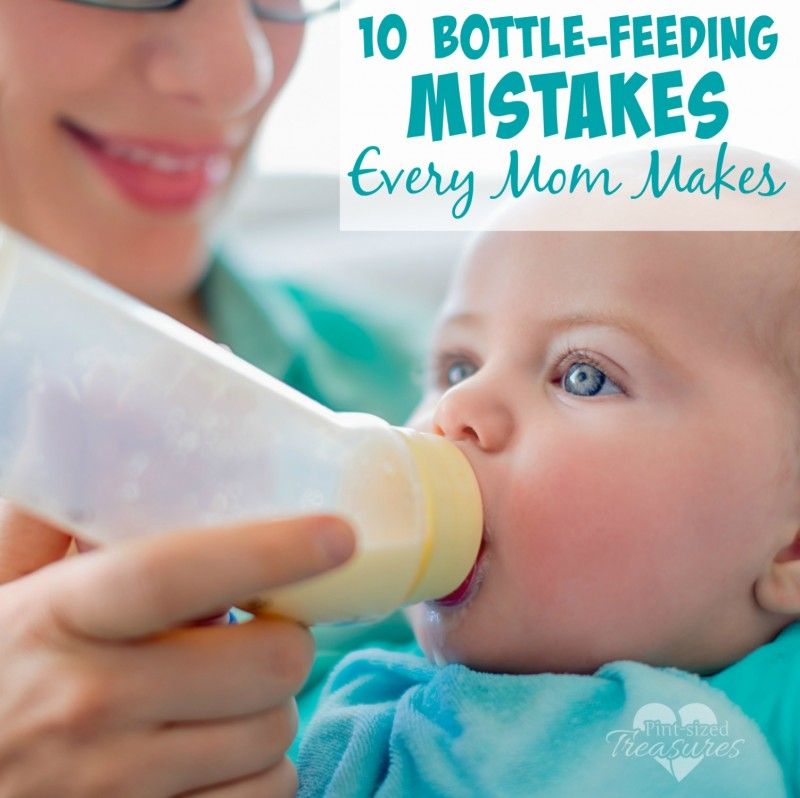 How to choose a product?
How to choose a product?
Login or register to save articles and products to your favorites
Nutrition
478 views
"Snacks" for children: what is the difference from "adult" treats?
Login or register to save articles and products to your favorites
Nutrition
6930 views
What are we going to eat?
Does a baby need a pillow to sleep Frequently ill children: who are they? How to prepare for conceptionVideo: How to choose the right first shoes for a baby
Nutrition
305355 views
Which juices are suitable for a child
Login or register to save articles and products to your favorites
Nutrition
149394 views
Is it necessary to give the child soup?
Login or register to save articles and products to your favorites
Nutrition
15771 views
What are porridges?
Login or register to save articles and products to your favorites
Nutrition
7565 views
Your first choice
Kind soul: how to raise a caring person How to teach a child to communicate with pets At what age should a child speak? Self-care skills: what and when? Newborn unconditioned reflexes
Showing 9 of 76 articles
Load more
We use cookies to make sure our website works properly, personalize advertisements and other content, provide functionality social networks and analyze network traffic.